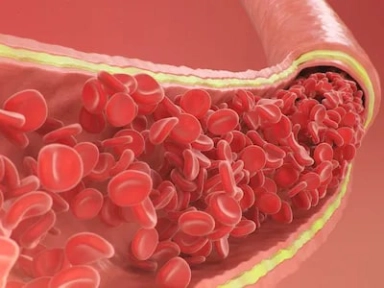{
event: "article_read",
name: `Why compromise for less: Should PCSK9 inhibitors be initial therapy?`,
author: ``,
tags: `Dyslipidemia | Cardiovascular`,
publication_date: ``,
interaction_type: "content"
}
Why compromise for less: Should PCSK9 inhibitors be initial therapy?
In the first year of lipid lowering among patients with ACS, who are at the highest risk, half the relative benefit of later years can be achieved using a combination of statin and PCSK9i.
Key Takeaway
- Patients with ACS have the highest risk in the first year after the event and would need to achieve lower LDL-C levels.
- Statin monotherapy will be ineffective alone if the targeted goal is <1.8 mmol/L (70 mg/dL) and certainly for <1.4 mmol/L (55 mg/dL).
- Real-world data suggest that with high residual risk with life span exposure, there is poor goal attainment, and many events are preventable by correcting CV risk factors as well as environmental and genetic factors.
- Greater use of combination therapy, particularly statins + PCSK9i, will improve LDL-C control post-ACS, thus likely reducing CV events.
Key Highlights
- The impact of time should not be ignored on the underlining disease progress. Patients seen after an ASCVD event are 50–60 years old and have been exposed for decades to high LDL-C, blood pressure, smoking, and environmental and genetic factors, leading to this event. After the event, there is a need to target these factors rather than preserve health
- If treatment is delayed, patients will need to be treated with a more aggressive therapy in terms of absolute LDL-C lowering.
- Mendelian randomized studies and controlled trials showed a 22% reduction in relative risk over 5 years with a 38-40 mmol/dL reduction of LDL-C, but this number goes up to 33% if maintained over 12 years, and nearly 50% when projected to 50 years.
- Trials have showed no evidence of a threshold below which lowering LDL-C loses benefit. The lower the LDL-C reduction, the better. However, the amount of absolute benefit depends on the baseline risk.
- Guidelines suggest a stepwise approach (starting with statin, then adding ezetimibe, and then adding PCSK9i), which is largely based on trial data
- As per the Mendelian randomization studies, a similar benefit is achieved with 15 mg/dL LDL-C lowering over 50 years when treated with either statin, ezetimibe, or PCSK9i
- Thus, instead of following a stepwise approach, a combinatorial approach would prove helpful
- The absolute risk post-ACS is very high, especially early after an MI.
- The relative benefit per 1 unit change in LDL-C is lower in the first year of treatment than in later years; therefore, greater absolute reductions in LDL-C are needed during this early period
- The combination of statins plus PCSK9i (mAbs) is a natural choice for LDL-C reduction
- LDL-C goals of 2016 ESC/EAS and AHA/ACC guidelines are similar, i.e., <70 mg/dL.
- With this approach, goal attainment was 45% with high-intensity statins, 54% with ezetimibe combination, and 67% with PCSK9i combination
- In contrast, the 2019 ESC/EAS guidelines suggest an LDL-C goal of <55 mg/dL
- With this approach, goal attainment was 45% with high-intensity statins, 54% with ezetimibe combination, and 67% with PCSK9i combination
- Thus, approximately half the patients would require a PCSK9i
- In the Swedeheart study, three-fourth patients were statin-naïve, meaning they were assumed to not be at a risk high enough to benefit from evaluation; yet they had an MI
- In one-quarter of patients who were on statins from admission to discharge, not intensifying lipid-lowering therapy would lead to the worst outcomes among all patients
- A simulation study reported that 4 out of 5 patients with recent MI would be eligible for escalated lipid-lowering therapy according to the 2019 ESC/EAS guidelines (<55 mg/dL) at 6–10 weeks after the event
- Of these, 50% would be eligible for additional treatment with PCSK9i after inadequate LDL-C control with maximally tolerated statins and ezetimibe therapy
ACS, acute coronary syndrome; AHA/ACC, American College of Cardiology/American Heart Association; ASCVD, Atherosclerotic Cardiovascular Disease; CVD, Cardiovascular Disease; ESC/EAS, European Society of Cardiology/European Atherosclerosis Society; LDL-C, Low-density Lipoprotein Cholesterol; mAb, Monoclonal Antibody; MI, Myocardial Infarction; PCSK9i, Proprotein Convertase Subtilisin/kexin type 9 inhibitors.
- Ray KK. Why compromise for less- Should PCSK9 inhibitors be initial therapy? Presented at American Heart Association (AHA) Scientific Sessions 2021 on November 28, 2021.
Related articles
MAT-KW-2400020/v1/Jan 2024


.webp/jcr:content/Lipid-lowering-therapy-thumb%20(2).webp)

.webp/jcr:content/Evaluation-of-lipid-management-following-ACS-thumb%20(1).webp)